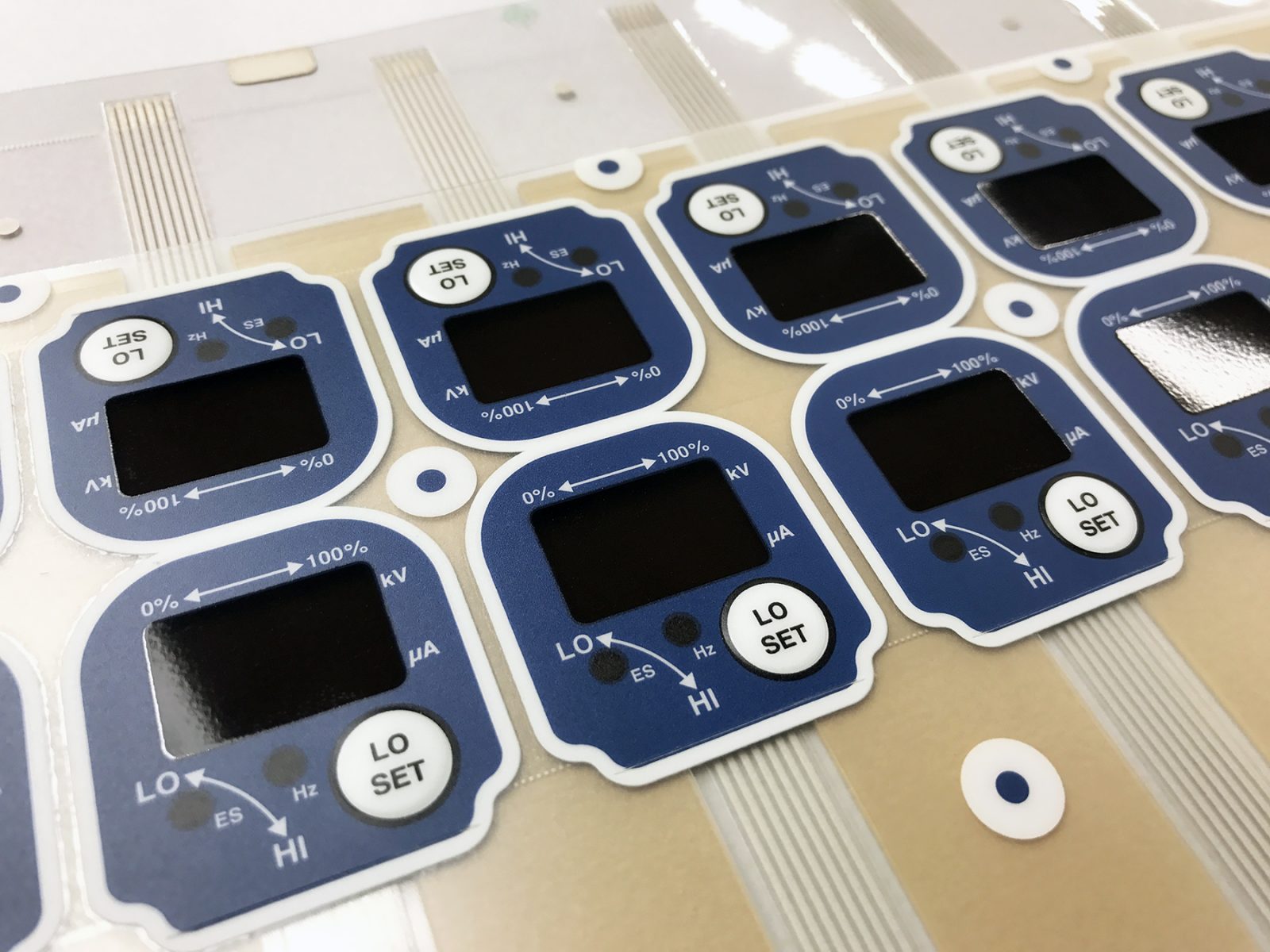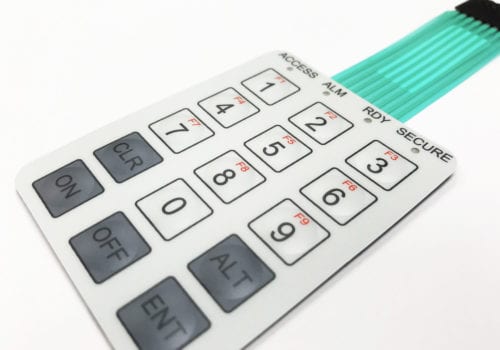Membrane Switches: A Crucial Component in Personalized Control Panels
Membrane Switches: A Crucial Component in Personalized Control Panels
Blog Article
Membrane Switch Over Innovation: The Trick to Reputable and Cost-efficient User Interfaces
Membrane switch technology has arised as an essential part in the design of interface, supplying both integrity and cost-effectiveness throughout a varied array of applications. Its durable building and construction ensures resistance to environmental challenges, while the flexibility in design allows for tailored services that meet particular industry needs. As we explore the multifaceted advantages of membrane switches, their potential for innovation raises inquiries about future applications and progressing trends. What does the next chapter hold for this innovation in an increasingly electronic landscape?
Comprehending Membrane Switch Over Innovation
Membrane layer switch modern technology is a commonly utilized user interface solution in numerous electronic gadgets, offering a smooth blend of performance and design. This innovation incorporates numerous layers of materials, generally being composed of a graphic overlay, spacer layer, and a circuit layer. The graphic overlay presents the user interface elements, while the spacer layer divides the circuit layer from the overlay up until a user turns on a button.
When pressure is used to the overlay, the circuit layer finishes the electrical circuit, sending out a signal to the device. This device allows for different configurations, consisting of responsive comments and backlighting alternatives, enhancing customer interaction. Membrane layer buttons are commonly produced using durable products such as polyester or polycarbonate, ensuring durability and resistance to ecological factors like wetness and dirt.
The adaptability of membrane changes allows their application in varied sectors, including medical gadgets, customer electronics, and industrial controls. Their small layout permits for integration into space-constrained atmospheres, supplying a reliable interface without compromising aesthetic appeal. Comprehending the ins and outs of membrane layer button technology is important for makers and developers looking for to develop trusted and reliable human-machine interfaces.
Key Advantages of Membrane Layer Buttons
While numerous user interface remedies exist, membrane layer changes offer unique advantages that make them a preferred selection in countless applications. Among the main benefits is their toughness; membrane switches are developed to endure harsh environmental problems, consisting of wetness, dust, and temperature level changes, making sure lasting performance. This strength dramatically lowers the demand for regular replacements, thereby decreasing total maintenance costs.

In addition, membrane switches are light-weight and portable, making them suitable for applications where area is restricted. Their inconspicuous layout contributes to a smooth look without compromising performance.
Cost-effectiveness is additionally a notable advantage, as the production procedure for membrane switches has a tendency to be less costly contrasted to conventional mechanical buttons. This cost, combined with their reliability and ease of installment, settings membrane layer switches over as a practical option for a vast array of markets looking for reliable and reliable customer interfaces.
Applications Throughout Numerous Industries
Just how do membrane switches adapt to the varied demands of numerous link sectors? Membrane switch technology is increasingly identified for its versatility, making it suitable for a vast array of applications across numerous markets.
In consumer electronics, membrane layer buttons give a portable remedy for push-button controls and home appliances, improving individual experience with instinctive design. Furthermore, the industrial market leverages membrane layer switches for machinery control panels, gaining from their resistance to rough environments, such as moisture and dust.
Military and aerospace applications additionally utilize membrane layer switches for their reliability and capability to endure severe problems, ensuring functional efficiency in critical scenarios. The food and beverage market adopts these buttons for automated systems, where hygiene and ease of operation are extremely important (membrane switch). Inevitably, membrane switches are tailored to meet the unique demands of each industry, verifying their essential duty in contemporary technology interfaces
Layout and Modification Choices

In the realm of membrane button innovation, design and personalization options play a critical role in boosting functionality and customer communication. These buttons can be tailored to fulfill particular operational demands and visual choices, making them functional parts in numerous applications.
Among the key personalization options is the format of the switch itself, which can be developed to suit distinct interface and ergonomic considerations. By adjusting the shape, dimension, and plan of buttons, makers can produce user-friendly designs visit their website that promote ease of use. In addition, the unification of various colors and graphic overlays enables branding and improved visibility, making sure that individuals can quickly identify features.
Additionally, membrane switches can be crafted with various tactile feedback systems, such as elevated switches or audible clicks, to improve the user experience. Different products can additionally be picked for resilience and environmental resistance, resolving variables such as moisture, temperature variations, and chemical direct exposure.
Ultimately, the substantial layout and personalization options readily available in membrane switch innovation equip companies to develop customized options that not just satisfy functional demands but likewise align with their branding visite site and functional requirements.

Future Trends in Membrane Layer Switches
As membrane layer switch innovation proceeds to progress, future fads are significantly concentrated on improving customer experience and integrating advanced capabilities. One substantial fad is the integration of touch-sensitive and capacitive innovations right into conventional membrane layer switches. This development permits for even more intuitive customer interfaces, providing responsive feedback while keeping a smooth layout.
Another emerging pattern is making use of eco friendly products, driven by the growing demand for sustainable manufacturing techniques. Makers are seeking to decrease their carbon footprint by using recyclable substratums and low-impact inks, aligning with global sustainability objectives.
In addition, the surge of the Web of Things (IoT) is triggering the consolidation of wise attributes right into membrane buttons. Boosted connectivity options will certainly make it possible for devices to interact with each various other, enabling seamless combination into wider systems.
Additionally, developments in printing technologies, such as electronic printing, are permitting greater layout adaptability and customization. This enables producers to create detailed designs and vivid shades cost-effectively.

Conclusion
To conclude, membrane layer button modern technology represents a vital development in interface layout, supplying significant advantages in toughness, customization, and cost-effectiveness. Its prevalent applicability throughout diverse industries highlights its importance in modern innovation. As developments proceed to arise, particularly in touch-sensitive interfaces and lasting materials, the potential for membrane layer switches over to enhance individual experience and functionality remains promising. Proceeded exploration of this technology will likely yield even more enhancements and expand its extent in future applications.
Report this page